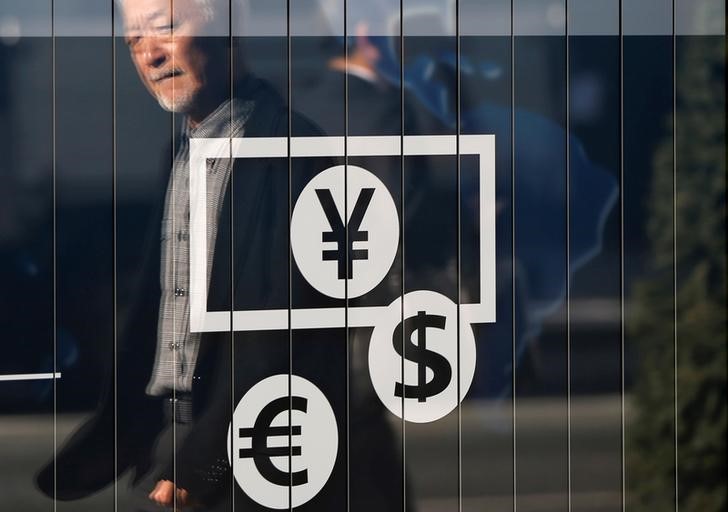Investing.com –The U.S. dollar gained some ground over the weekend while the Japanese yen weakened as new tariffs took effect in both the U.S. and China, marking the next step in their ongoing trade dispute.
The USD/JPY pair last traded at 106.20 by 10:06 PM ET (02:06 GMT), down 0.08%. Last week, the yen had strengthened as much as JPY105 to the USD.
For its part, the People’s Bank of China (PBoC) set the midpoint for trading in the CNY at a low not seen in more than eleven-and-a-half years of 7.0883 to the dollar, that’s lower than the previous midpoint of 7.0879 and the weakest since March 2008.
On Sunday, tariffs of 15% on USD110 billion of Chinese imports took effect while retaliatory tariffs from China also kicked in over the weekend.
The Chinese currency was also pressured by the latest data from the National Bureau of Statistics (NBS) which reported on Saturday that the official manufacturing Purchasing Index came in at 49.5 for August, down from 49.7 in July.
However, the Caixin China General Manufacturing Purchasing Managers' Index (PMI) recorded an increase to 50.4 in August (with a number over 50 signaling expansion) up from 49.9 in July.
The official non-manufacturing PMI rose for the first time in five months to 53.8 in August from 53.7 in July.
“China’s manufacturing sector showed a recovery in August, mainly due to improved production activity,” Zhong Zhengsheng, director of macroeconomic analysis with CEBM Group, told Caixin, a mainland China business publication. “However, overall demand didn’t improve and foreign demand declined notably.”
The US Dollar Index Futures was down 0.09% to 98.83.
U.S. markets are closed Monday for the Labor Day holiday.
The GBP/USD pair was flat at 1.2157 as the fallout of Prime Minister Boris Johnson’s decision to suspend Britain's parliament for more than a month started to become apparent.
The AUD/USD pair was down 0.02% to 0.6731 and the NZD/USD pair traded up 0.02% to 0.6307.
